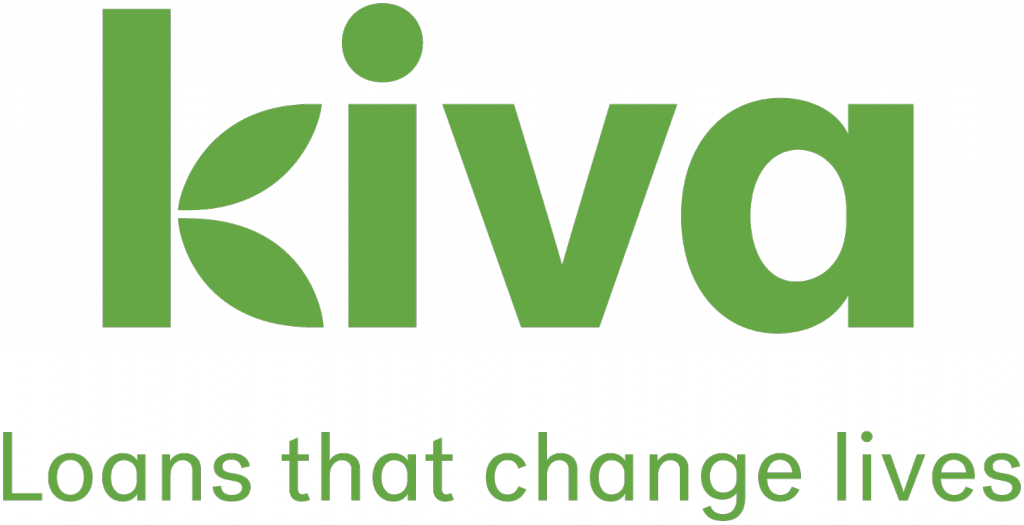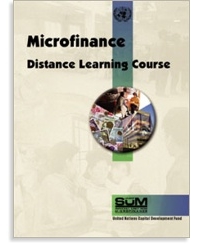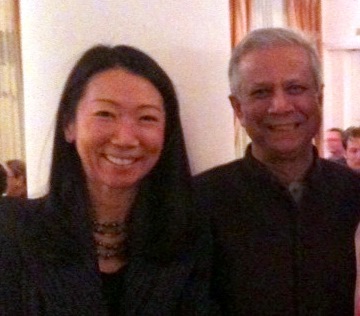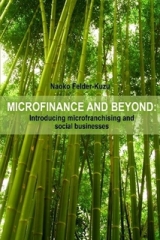 On June 22, 2017 Kiva announced that their life-changing loans had reached 1 billion mark, an amazing accomplishment! Congratulations to the Kiva team especially Matt, Jessica and Premal! In this journal we covered Kiva 4 times since 2006. Soon after they started operation, when they reached 100 million, when they had growing pains and when they started student loans. It has been great to use Kiva in the classrooms to teach microfinance and to give Kiva cards to friends and family to discover their different interests and passions. Thank you Kiva and keep up the great work!
On June 22, 2017 Kiva announced that their life-changing loans had reached 1 billion mark, an amazing accomplishment! Congratulations to the Kiva team especially Matt, Jessica and Premal! In this journal we covered Kiva 4 times since 2006. Soon after they started operation, when they reached 100 million, when they had growing pains and when they started student loans. It has been great to use Kiva in the classrooms to teach microfinance and to give Kiva cards to friends and family to discover their different interests and passions. Thank you Kiva and keep up the great work!
Category Archives: microfinance
Free web-based UNCDF Microfinance Distance Learning Course

For anyone who would like to learn about Microfinance this is a great online tool. I took this distance learning course back in 2003 and it was great but now it is interactive and it is free. A thanks to Camelia Hrab for sending me this info. UNDP Microfinance Distance Learning Course
Thank you Professor Yunus
 On May 12th, Nobel Laureate Yunus Muhammad resigned from Grameen Bank after a two and a half month battle with the Bangladesh government which was determined to remove him as the head of the successful bank he created. It is a sad and unjustified chapter for Prof Yunus but this shall not discredit what the microfinance movement has accomplished and its continuing positive impact. Prof Yunus addressed his colleagues a letter on his departure, asking them to to remain strong and united.
On May 12th, Nobel Laureate Yunus Muhammad resigned from Grameen Bank after a two and a half month battle with the Bangladesh government which was determined to remove him as the head of the successful bank he created. It is a sad and unjustified chapter for Prof Yunus but this shall not discredit what the microfinance movement has accomplished and its continuing positive impact. Prof Yunus addressed his colleagues a letter on his departure, asking them to to remain strong and united.
 Just two days before, on May 10th, I attended an exhibition on “How I can make a difference” by the 5th graders at the Inter-Community School in Zurich. This is a programme that requires that students engage in a collaborative, transdiscipplinary, inquiry process that involves them in identifying , investigating and offering solutions to real-life issues or problems. Connor Frey, one of the bright 5th graders (and the son of my friends Ali and Markus) had chosen “microfinance” as his topic. A month ago I was interviewed by Connor on this subject. I was very impressed and moved to see Connor’s exhibits about microfinance, the history, about Yunus Muhammad and the pamphlete he made on the dos and don’ts on investing in microfinance. He is passionate about the subject and spreading the word! Great job, Connor. I could not stop thinking that Yunus would have enjoyed seeing his exhibition.
Just two days before, on May 10th, I attended an exhibition on “How I can make a difference” by the 5th graders at the Inter-Community School in Zurich. This is a programme that requires that students engage in a collaborative, transdiscipplinary, inquiry process that involves them in identifying , investigating and offering solutions to real-life issues or problems. Connor Frey, one of the bright 5th graders (and the son of my friends Ali and Markus) had chosen “microfinance” as his topic. A month ago I was interviewed by Connor on this subject. I was very impressed and moved to see Connor’s exhibits about microfinance, the history, about Yunus Muhammad and the pamphlete he made on the dos and don’ts on investing in microfinance. He is passionate about the subject and spreading the word! Great job, Connor. I could not stop thinking that Yunus would have enjoyed seeing his exhibition.
Skoll Forum 2011
A belated report on the Skoll Forum 2011. This year’s main theme was “Large Scale Change” . Lots of content. I recommend the selection of superb blogs, and in highlights you can find all the sessions and plenaries as video or podcasts. It was nice to have been able to attend Skoll forum for the 5th time in a row as initially I planned to be in Japan teaching social entrepreneurship for the YES Japan Creating Drivers for Sustainability program (which was understandably cancelled due to the triple disaster). My takeaways: of course the optimistic, positive energy that always flows at Skoll Forums, networking, the interactive meetings at Oxford Jam and last but not least connecting with Shino (Japan Research Center), Ichi (Social Media) and Patrik Meier (Crisis Mapping, Ushahidi) to discuss and share information on how to support Japan in the wake of the recent triple disaster.
The microcredit crisis in Andra Pradesh, India
The microcredit crisis in India has been unfolding since mid October when the state of Andra Pradesh issued an ordinance to crackdown on microlenders. The ordinance required that all microlenders cease disbursing and collecting loans, register to the authorities and declare the interests charged. The state was concerned with the explosive growth of loans and around 50 suicides reports by rural men and women that were attributed to overindebtness. Although some of the MFIs have been able to resume their activities this kneejerk reaction by the state of Andra Pradesh has sent the industry into a crisis and is more likely to do harm than protect the poor borrowers. Shares of SKS Microfinance which had a successful IPO in August this year has been plunging and is currently less than half of its peak in September.The Indian microcredit industry is the largest in the world. The state of Andra Pradesh is the center of microcredit in India and home to India’s largest MFIs such as SKS, Spandana, BASIX and Share Microfin as well as the government nurtured Self-Help Groups or SHGs. There has been excellent writeups on this subject and background which I can highly recommend.
– Indian Microfinance Crisis of 2010: Turf War or a Battle of Intentions? Intellecap White Paper
– Who is the Culprit? Accessing Finance in Andra Pradesh, CGAP
– India’s Microfinance Crisis is a Battle to Monopolize the Poor, Vineet Rai, HBR
– Backgrounder on India’s Microfinance Crisis, David Roodman
A great debate on microfinance at CGI
This I believe will become a “classic” or the debate between “who should benefit from microfinance”. My humble opinion…I think that both have valid points and there is enough room for both ideals as there are so many people in need for basic services at the BOP or bottom of the pyramid.
Kiva.org extends it services and start (pilot) offering student microloans

Kiva.org, the world’s first microlending website announced today its entry into the education field by offering a pilot for student microloans in 3 countries. So beginning today anyone can make a loan starting at USD 25 to students that are selected by Kiva’s first 3 education field partners; Fundacion Paraguaya (Paraguay) IMPRO (Bolivia) and Ameen s.a.l. (Lebanon). Kiva.org an innovative social enterprise created a movement to connect people around the world through lending to alleviate poverty. In only 5 years, Kiva.org has provided over USD 160 mn in loans to 415,000 microentrepreneurs around the world and these loans (which are as little as USD 25) have come from close to half a million lenders spread in 206 countries!
“The pilot was born as a natural extension of Kiva’s mission to connect people, through lending, to alleviate poverty. Kiva Student Microloans give recipients the opportunity to gain new knowledge and skills through higher education or vocational training. As a result, these individuals will be better positioned to find jobs, support their families and grow their communities — and ultimately make a real difference in the relief of global poverty.” (source: Kivablog)
New interesting publications on microfinance
Some interesting reports/studies have been recently published. This was brought to my attention by Microcapital.
Microfinance’s Midlife Crisis from the Wall Street Journal , Assessing the Role of Microfinance in Fostering Adaptation to Climate Change by Shardul Agrawala and Maëlis Carraro, and Microfinance and Inequality by the Macrothink Institute written by Hisako Kai and Shigeyuki Hamori.
Revisiting the impact of microfinance
A number of studies and articles have been appearing since last year questioning the impact of microcredit – microfinance. One of the most recent reports “Does Microcredit Really Help Poor People?” written by the seasoned microfinance expert Richard Rosenberg provides an excellent overview of the studies and his view on this subject. According to this report the claim in doubt is whether microfinance (or the microloans) is the cause for the economic improvement (increase in income and consumption, moving people out of poverty) as well as positive impact in health, education and social empowerment. The problem being that scientific testing of the impact of microcredit is very difficult (and therefore proving the claims are difficult). Rosenberg ends the report with the following words;
“Small one-time subsidies – leverage large multiples of unsubsidized funds – producing sustainable delivery year after year of highly valued services that help hundered of millions of people – keep their consumption stable, finance major expenses, and cope with shocks – despite incomes that are low, irregular, and unreliable.
All and all isn’t this a pretty impressive value proposition, even if we eventually find out that microfinance doesn’t raise income the way some of its proponents have claimed?”
In retrospect, it is very likely that in the past years the rising popularity of microfinance and its impact had become over-blown. Proponents of microfinance (including this author), in their quest of raising awareness of this powerful and effective tool to improve the life of the BOP, have been too enthusiastic and most likely also helped create the overhyped state. So the recent critical articles are deflating the overly high expectations that were built on microfinance and its impact. This is a healthy sign. I thank David Roodman and his excellent open-book blog which has been providing a critical view on the many issues surrounding the impact of microfinance.
Book: Microfinance and Beyond: Introducing microfranchising and social businesses

This book introduces innovative social/business models that provide sustainable solutions to the problem of poverty and portrays the insipiring people behind them.You can find an update on microfinance, BOP (base of the pyramid) initiatives, and microfranchising all which are improving the lives of the 4 billion people living at the BOP. VisionSpring, an innovative social microfranchising enterprise with the mission to reduce poverty and generate opportunity through the sale of affordable reading glasses is featured as a model case. The aim of this book was to share my insights on 1) how the business and social worlds have been converging, setting the stage for these innovative models to emerge, 2) how these models, together with the advent of Web 2.0, are creating a strong and positive movement towards a more responsible, sustainable and kinder world and 3) how all of us could make a difference.
This book is the updated English version of the German book that was published last year. I used lulu.com to publish this and I can recommend it.
